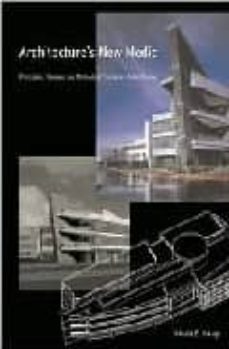ARCHITECTURE S NEW MEDIA: PRINCIPLES, THEORIES, AND METHODS OF CO MPUTER AIDED-DESIGN de YEHUDA E. KALAY
Ficha técnica
- ARCHITECTURE S NEW MEDIA: PRINCIPLES, THEORIES, AND METHODS OF CO MPUTER AIDED-DESIGN
- YEHUDA E. KALAY
- Formatos: Pdf, ePub, MOBI, FB2
- ISBN: 9780262112840
Libro en Inglés pdf descarga gratuita ARCHITECTURE S NEW MEDIA: PRINCIPLES, THEORIES, AND METHODS OF CO MPUTER AIDED-DESIGN 9780262112840 in Spanish CHM MOBI de YEHUDA E. KALAY
Overview
Yehuda E. Kalay, William J. Mitchell
A comprehensive examination of computer-aided architectural design and its potential effect on architectural design practice; for practitioners, educators, students, and researchers.
Computer-aided design (CAD) technology has already changed the practice of architecture, and it has the potential to change it even more radically. With Architecture's New Media, Yehuda Kalay offers a comprehensive exposition of the principles, methods, and practices that underlie architectural computing. He discusses the aspects of information technology that are pertinent to architectural design, analyzes the benefits and drawbacks of particular computational methods, and looks at the potential of emerging computational techniques to affect the future of architectural design. CAD technology, introduced in the postwar era and adopted in everyday architectural practice beginning in the 1970s, is now so indispensable that, as William Mitchell observes in his foreword, architectural practice without it is "as unimaginable as writing without a word processor." Yet, Kalay argues, it has had little qualitative effect. This book provides a detailed introduction for practitioners, educators, students, and researchers to aspects of CAD that go beyond the improvements in drafting, modeling, and rendering for which it is commonly used. Computer-aided architectural design (CAAD) is capable of modeling and manipulating objects (not merely their graphical representations), reasoning about and predicting performance of design solutions, generating new design solutions through algorithmic and other methods, managing vast amounts of information, and taking advantage of opportunities offered by the Internet for collaboration across time and space and for design of the virtual "space" of the Internet itself. Architecture's New Media covers five main topics: design methods and computer technology and the relationship between computers and design; the principles of communication and representation; generative design methods; the advantages of computational methods for predicting and evaluating the performance of design solutions; and current and future developments in technology, including collaborative design, intelligent design assistants, construction automation, and virtual design environments.


0コメント